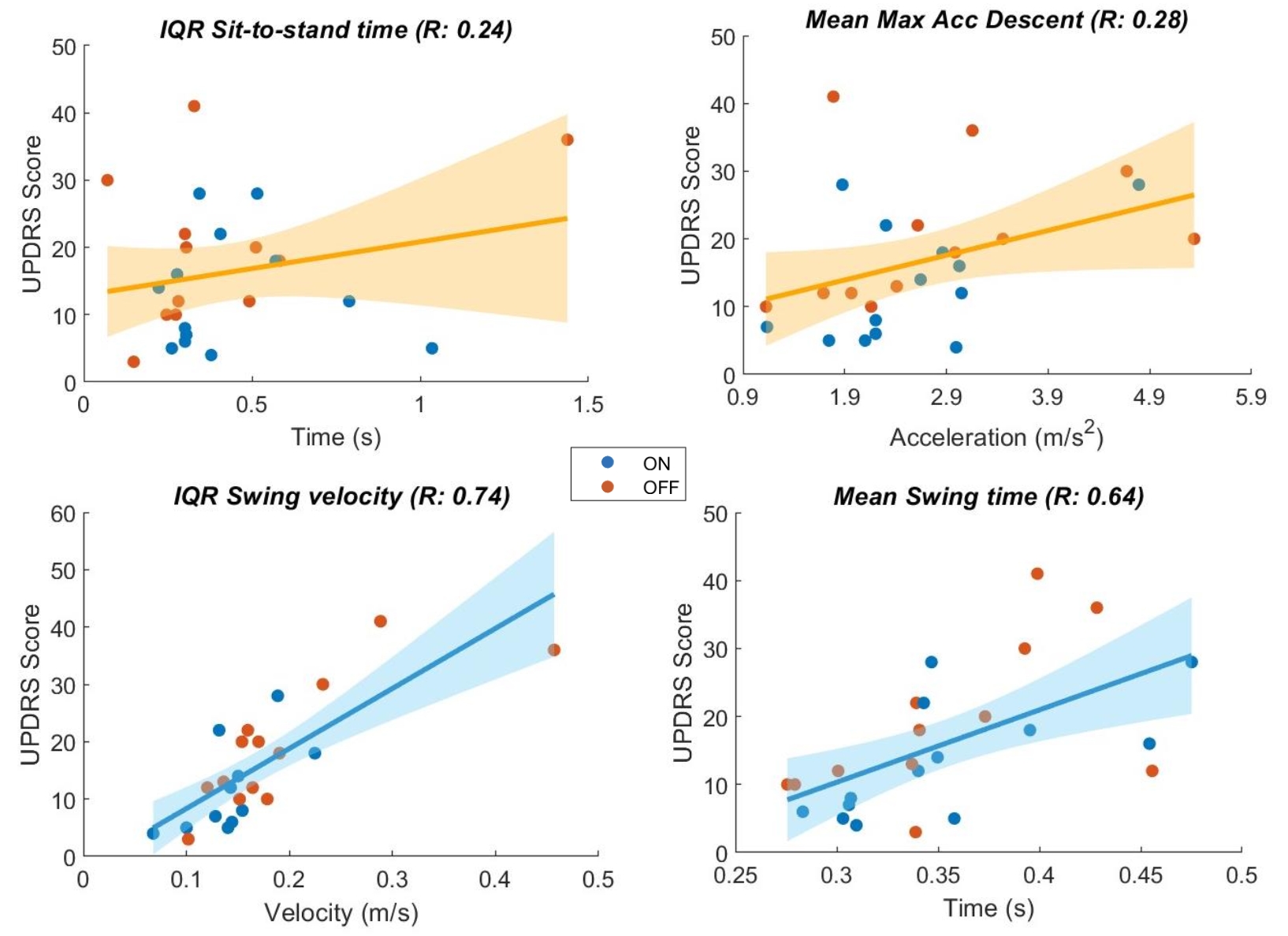Parkinson’s disease (PD) motor symptoms severity is traditionally assessed in a clinical setting using The Unified Parkinson's Disease Rating Scale (UPDRS) which provides snapshots of PD signs and can miss the continuous trajectory of the disease. Longitudinal measurements from wearable devices can provide robust tracking and account for symptom fluctuations [1, 2]. In this study, bilateral wrist-worn wearable inertial sensor devices were utilised to extract digital biomarkers for PD from movement during physical performance tests and real-world tasks. The research zeroed in on measures during gait and sit-to-stand tasks, evaluating the potential of digitally extracted motor features to discern ON/OFF times and assess levels of disease severity.
In the Living Lab study [3], we enlisted a group of 13 individuals with PD. The Living Lab emulates a residential setting while preserving the experimental rigor of a traditional laboratory, facilitating the replication of daily household activities under controlled conditions. Specifically, we extracted digital biomarkers of mobility from the 5-times Chair Stand Test (5x STS) and the 4-meter Gait Speed Test (4 GST) from the Short Physical Performance Battery (SPPB). Triaxial IMU sensors were affixed in the anteroposterior position on both wrists, collecting data in both the ON state and a practically defined OFF state just before medication intake. Analytical validation was achieved by correlating these findings with total scores from Part 3 of the UPDRS. A Support Vector Machine (SVM) was used to discern between ON/OFF times and subscores from Part 3.26 (Arising from Chair) and 3.27 (Gait) of the UPDRS. Cohen's d effect sizes were computed to gauge the extent of change in features across various levels of severity and medication conditions.
Among all the features examined through Spearman correlation analysis with Part 3 of the UPDRS, those related to gait, particularly the interquartile range (IQR) of swing velocity on the most affected side (R = 0.74), exhibited significant associations (p-value < 0.05). Notably, IQR features displayed stronger correlations than mean features. Sit-to-stand features, while showing weaker links to total UPDRS scores, excelled in classifying task-specific severity (AUC = 1) for Part 3.26 and distinguishing ON/OFF times (AUC = 0.88). According to Shapley analysis, key features contributing to ON/OFF states classification included mean active rising time (d = 0.31) and mean eccentric time (d = -0.73) for sit-to-stand, and mean stance and swing velocity (d = -0.27) for gait.
This study underscores the promise and effectiveness of accelerometer-based digital measures for discerning between ON and OFF medication states in PD and evaluating overall and task-specific symptom severity. The potential integration of sock-embedded IMU sensors emerges as a prospective avenue for validating these digital measures. The Living Lab setting facilitates the analysis of everyday activities in controlled conditions, shedding light on the practical implications of our findings in real-world contexts. Furthermore, a longitudinal analysis holds potential for gaining deeper insights into long-term progression patterns in PD.


